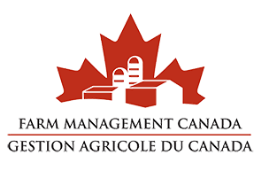Category: Management | Topic: Public Trust and Consumer Advocacy
Posted Date: November 21, 2022

The context
Recent years have seen a flurry of activity in the alternative proteins space, from scrambled eggs made from mung beans[1] to meat grown in a lab.[2] Biorefined or cultured proteins refer to proteins found naturally in meat, eggs, or dairy, but grown in biofoundries or bioreactors using yeasts, bacteria, or stem cells. The resulting products are nearly identical to that produced via conventional means, i.e., animal husbandry, but may be modified to, for example, have a healthier fat profile. These technologies have existed for some time in the biopharmaceutical sector to produce organs, tissues for medical interventions or proteins of pharmaceutical interest, but the technology has been refined to produce animal proteins as food ingredients at a commercial scale.
The cultured protein movement has gained significant momentum due to accelerating consumer demand for the food industry to become not only carbon neutral, but carbon negative, more humane, more affordable, more nutritious, more abundant, more secure, and more localized. To meet the increasingly numerous and complex demands of a growing population, food production is on the cusp of a new revolution with cultured protein stepping forward to assert itself as part of the solution to what many perceive as threats to food safety, security, animal welfare and the environment.[3]
The promise of greater efficiency in terms of cost and impact will be welcomed by many and governments the world over have already begun investigating and investing[4] in cultured meat, with Japan[5] and the European Union[6] launching food safety assessments, the US looking into labelling,[7] China[8] and Singapore[9] integrating it as into policy, and infrastructure being put into place.[10]
What are the risks?
Risks of cultured protein are still unfolding as development of this technology continues to evolve. However, in terms of risks to livestock farmers, cultured proteins represent a direct challenge to animal agriculture, no matter how technologically developed farming is or may become.
At the present time, cultured proteins are still significantly more expensive to produce than farmed animal proteins.[11] However, as cultured meat, eggs, and dairy expand, they may eventually become more affordable than or altogether replace their farm-raised equivalents at the grocery store. Their hypothesized low production costs, low environmental impact, and equivalent (or even improved) nutritional profiles may drive up the prices of conventional proteins and become a multi-billion dollar industry in their own right.[12] The pace at which this would occur, however, is forecasted to be relatively slow; even though cultured protein will likely be a global phenomenon, it is not predicted to reach parity with animal agriculture until 2040.[13] Knock-on impacts of this growth may be substantial, however, since the livestock sector produces numerous by-products other than food items, such as horns, fertilizer, leather, and more.[14]
Plant-based proteins have already created pressure on livestock farmers, with Beyond Meat and Impossible Foods producing “plant meats” to appeal to vegan and vegetarian consumers.[15] These products have already appeared in grocery stores and at restaurants, but while plant-based proteins are predicted to see greater market share, cultured meat may stagnate the growth of plant-based proteins,[16] impacting farmers who benefitted from the development of this sector and which were helped along by updated, more plant-based food guides such as Canada’s,[17] Harvard’s,[18] and that proposed by the EAT-Lancet Commission.[19]
What does it mean for farmers?
The past two and a half years have seen much turmoil and if we have learned anything, it’s to expect. Farmers are no strangers to disruption and have weathered various challenges since the ice melted and they tilled the soil for the first time. However, technological advancement has already reduced the number of farmers in the world to historic lows, and cultured meat presents the same challenge. As the climate emergency intensifies, governments and industry are likely to pursue such technological solutions over traditional livelihoods.
What can farmers do to manage risk?
For farmers, this means increased pressure to understand the forces at work which could dramatically reshape the global food system. Keeping abreast of such developments will support strategic decision-making, especially for livestock producers.
Strategic decision-making includes, as a first step, assessing risks—both current and potential. This may influence whether planned investments into livestock operations should be pursued. A risk assessment can be the foundation for future decisions, and lead farmers to as yet unconsidered but beneficial avenues. There are several trends related to cultured protein that farmers could consider investigating to inform strategies, such as the emerging carbon market, alternative farm management practices and systems, the green economy, and renewable energy.
Networking with fellow farmers, agricultural unions and organizations, research institutions, government, and industry can facilitate these steps and support farmers in ensuring they remain not only informed, but prepared.
[2] https://www.foodsafetynews.com/tag/lab-grown-meat/
[3] https://www.bcg.com/en-ca/publications/2021/the-benefits-of-plant-based-meats
[4] https://vegconomist.com/market-and-trends/alt-proteins-gained-5bn-globally-in-2021-with-half-of-total-invested-in-europe/
[5] https://plantbasednews.org/news/alternative-protein/japans-health-ministry-cultured-meat-regulation/
[6] https://www.euractiv.com/section/agriculture-food/news/cultivated-meat-companies-gear-up-for-first-eu-approval-applications/
[7] https://www.usda.gov/media/press-releases/2021/09/02/usda-seeks-comments-labeling-meat-and-poultry-products-derived#:~:text=On%20March%207%2C%202019%2C%20USDA,safe%2C%20unadulterated%20and%20truthfully%20labeled
[8] https://www.nycfoodpolicy.org/food-policy-snapshot-china-five-year-agricultural-plan-cultivated-meat/
[9] https://www.poultryworld.net/the-industrymarkets/market-trends-analysis-the-industrymarkets-2/singapore-ramps-up-cultivated-chicken-meat-production/#:~:text=A%20world%20first,for%2090%25%20of%20its%20food
[10] https://www.foodingredientsfirst.com/news/good-meat-builds-worlds-largest-bioreactors-to-produce-cultivated-meat.html
[11] https://www.mckinsey.com/industries/agriculture/our-insights/cultivated-meat-out-of-the-lab-into-the-frying-pan
[12] https://www.mckinsey.com/industries/agriculture/our-insights/cultivated-meat-out-of-the-lab-into-the-frying-pan
[13] https://www.kearney.com/consumer-retail/article/-/insights/when-consumers-go-vegan-how-much-meat-will-be-left-on-the-table-for-agribusiness
[14] https://www.kearney.com/consumer-retail/article/-/insights/when-consumers-go-vegan-how-much-meat-will-be-left-on-the-table-for-agribusiness
[15] https://www.beyondmeat.com/en-CA/; https://impossiblefoods.com/ca
[16] https://www.kearney.com/consumer-retail/article/-/insights/when-consumers-go-vegan-how-much-meat-will-be-left-on-the-table-for-agribusiness
[17] https://food-guide.canada.ca/en/; https://www.hsph.harvard.edu/nutritionsource/healthy-eating-plate/
[18] https://www.hsph.harvard.edu/nutritionsource/healthy-eating-plate/
[19] https://eatforum.org/eat-lancet-commission/the-planetary-health-diet-and-you/
 Skip to main content
Skip to main content
